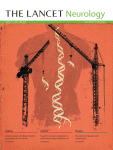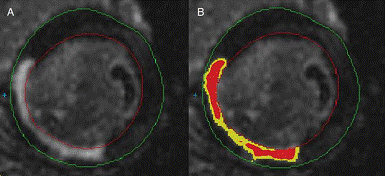Lancet Neurology:磁共振血管成像显示无先兆偏头痛发作时不伴有颅外动脉扩张
2013-05-06 Lancet Neurology 丁香园
传统血管假说认为偏头痛与颅内外血管收缩有关,随后颅内外血管扩张导致头痛。颅外动脉扩张假说也曾被认为是无先兆偏头痛的病因之一。为此,来自丹麦的Faisal Mohammad Amin等医师采用测量无症状偏头痛发作时颅内外动脉的扩张情况来检测此假说,结果发表在2013年5月的Lancet Neurology杂志上。研究结果显示,偏头痛发作时并不伴有颅外动脉的扩张,只有轻度的颅内动脉的扩张。在此横断面研
传统血管假说认为偏头痛与颅内外血管收缩有关,随后颅内外血管扩张导致头痛。颅外动脉扩张假说也曾被认为是无先兆偏头痛的病因之一。为此,来自丹麦的Faisal Mohammad Amin等医师采用测量无症状偏头痛发作时颅内外动脉的扩张情况来检测此假说,结果发表在2013年5月的Lancet Neurology杂志上。研究结果显示,偏头痛发作时并不伴有颅外动脉的扩张,只有轻度的颅内动脉的扩张。
在此横断面研究中,共纳入丹麦头痛中心及丹麦网站上招募的18岁到60岁偏头痛患者。在单侧偏头痛发作的同时进行磁共振血管成像。主要终点事件为偏头痛发作时与未发作史及头痛侧与非头痛侧颅内外动脉血管周长的不同。测量的颅外动脉段包括颈外动脉、颞浅动脉、脑膜中动脉和颈内动脉的颈部段。颅内动脉测量的部分为颈内动脉的海绵窦段及脑内段,大脑中动脉及基地动脉。此研究在Clinicaltrials网站注册,注册号为NCT01471314。
在2010年10月12日至2012年2月8日期间,共招募78位患者,最终19例女性患者完成偏头痛发作时的扫描过程。偏头痛发作与未发作时的对比发现,头痛侧颅外动脉并没有明显扩张,差异没有统计学意义(颈外动脉平均不同为1·2% [95%可信区间为-5·7到8·2,p=0·985],颞浅动脉平均不同为3·6% [—3·7 到11·0] p=0·532,脑膜中动脉平均不同为1·7% [—1·7到5·2] p=0·341,颈内动脉颈部段平均不同为2·3% [—0·3到4·9] p=0·093)。偏头痛发作时颅内动脉扩张较显著((大脑中动脉为13·0% [6·4到19·6] p=0·001,颈内动脉脑内段11·5% [5·6到17·3] p=0·0004, 颈内动脉海绵窦段11·4% [5·3为17·5] p=0·001,但基底动脉没有明显扩张(1·6% [—2·7到5·9] p=0·621))。偏头痛发作时头痛侧与非头痛侧相比,头痛侧颅内动脉扩张明显(大脑中动脉扩张10·5% [0·7—20·3] p=0·044, 颈内动脉脑内段扩张14·4% [4·6—24·1] p=0·013),颈内动脉海绵窦段扩张9·1% [3·9—14·4] p=0·003),相比来说,颅外动脉两侧对比没有统计学差异(颈外动脉2·1% [—3·8到9·2] p=0·238,颞浅动脉3·6% [—3·7到10·8] p=0·525,脑膜中动脉2·7% [—1·3到5·6] p=0·531,颈内动脉颈部段5·0% [—0·5到10·4] p=0·119)。
研究显示,偏头痛发作时并不伴有颅外动脉的扩张,只有轻度的颅内动脉的扩张。对于偏头痛以后的研究,应更倾向于外周与中枢的疼痛通路而不是简单的颅内外动脉扩张。
与胃旁路术相关的拓展阅读:
- JCEM:Roux-en-Y胃旁路术术后胰岛素清除增加
- STM:胃旁路术的部分益处可能是肠道微生物变化的结果
- 胃旁路术可使轻度肥胖患者的糖尿病缓解
- 胃旁路术与胆胰转流术均能较好控制糖尿病大鼠血糖水平 更多信息请点击:有关胃旁路术更多资讯

Magnetic resonance angiography of intracranial and extracranial arteries in patients with spontaneous migraine without aura: a cross-sectional study.
BACKGROUND
Extracranial arterial dilatation has been hypothesised to be the cause of pain in patients who have migraine without aura. To test that hypothesis, we aimed to measure extracranial and intracranial arteries during attacks of migraine without aura.
METHODS
In this cross-sectional study, we recruited patients aged 18-60 years from the Danish Headache Centre and via announcements on a Danish website. We did magnetic resonance angiography during spontaneous unilateral migraine attacks. Primary endpoints were difference in circumference of extracranial and intracranial arterial segments comparing attack and attack-free days and the pain and the non-pain side. The extracranial arterial segments measured were the external carotid (ECA), the superficial temporal (STA), the middle meningeal (MMA), and the cervical part of the internal carotid (ICAcervical) arteries. The intracranial arterial segments were the cavernous (ICAcavernous) and cerebral (ICAcerebral) parts of the internal carotid, the middle cerebral (MCA), and the basilar (BA) arteries. This study is registered at Clinicaltrials.gov, number NCT01471314.
FINDINGS
Between Oct 12, 2010, and Feb 8, 2012, we recruited 78 patients, of whom 19 women had a scan during migraine and were included in the final analysis. On migraine compared with non-migraine days, we detected no statistically significant dilatation of the extracranial arteries on the pain side (ECA, mean difference 1·2% [95% CI -5·7 to 8·2] p=0·985, STA 3·6% [-3·7 to 11·0] p=0·532, MMA 1·7% [-1·7 to 5·2] p=0·341, and ICAcervical 2·3% [-0·3 to 4·9] p=0·093); the intracranial arteries were more dilated during attacks (MCA, 13·0% [6·4 to 19·6] p=0·001, ICAcerebral 11·5% [5·6 to 17·3] p=0·0004, and ICAcavernous 11·4% [5·3 to 17·5] p=0·001), except for the BA (1·6% [-2·7 to 5·9] p=0·621). Compared with the non-pain side, during attacks we detected dilatation on the pain side of the intracranial arteries (MCA, mean difference 10·5% [0·7-20·3] p=0·044, ICAcerebral (14·4% [4·6-24·1] p=0·013), and ICAcavernous (9·1% [3·9-14·4] p=0·003) but not of the extracranial arteries (ECA, 2·1% [-3·8 to 9·2] p=0·238, STA, 3·6% [-3·7 to 10·8] p=0·525, MMA, 2·7% [-1·3 to 5·6] p=0·531, and ICAcervical, 5·0% [-0·5 to 10·4] p=0·119).
INTERPRETATION
Migraine pain was not accompanied by extracranial arterial dilatation, and by only slight intracranial dilatation. Future migraine research should focus on the peripheral and central pain pathways rather than simple arterial dilatation.
FUNDING
University of Copenhagen, the Lundbeck Foundation, the Research Foundation of the Capital Region of Denmark, Danish Council for Independent Research-Medical Sciences, and the Novo Nordisk Foundation.
本网站所有内容来源注明为“梅斯医学”或“MedSci原创”的文字、图片和音视频资料,版权均属于梅斯医学所有。非经授权,任何媒体、网站或个人不得转载,授权转载时须注明来源为“梅斯医学”。其它来源的文章系转载文章,或“梅斯号”自媒体发布的文章,仅系出于传递更多信息之目的,本站仅负责审核内容合规,其内容不代表本站立场,本站不负责内容的准确性和版权。如果存在侵权、或不希望被转载的媒体或个人可与我们联系,我们将立即进行删除处理。
在此留言









#Neurol#
69
#扩张#
77
#血管成像#
61
#Lancet#
51
#磁共振#
54